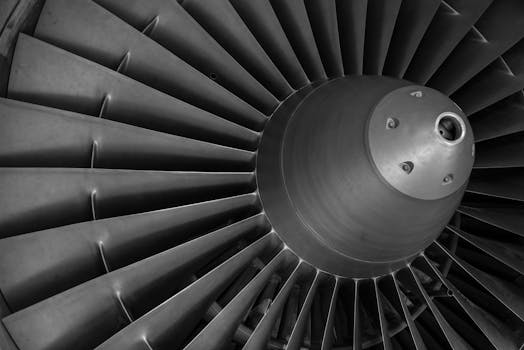+17162654855
+17162654855
NRP Publication News serves as an authoritative platform for delivering the latest industry updates, research insights, and significant developments across various sectors. Our news articles provide a comprehensive view of market trends, key findings, and groundbreaking initiatives, ensuring businesses and professionals stay ahead in a competitive landscape.
The News section on NRP Publication News highlights major industry events such as product launches, market expansions, mergers and acquisitions, financial reports, and strategic collaborations. This dedicated space allows businesses to gain valuable insights into evolving market dynamics, empowering them to make informed decisions.
At NRP Publication News, we cover a diverse range of industries, including Healthcare, Automotive, Utilities, Materials, Chemicals, Energy, Telecommunications, Technology, Financials, and Consumer Goods. Our mission is to ensure that professionals across these sectors have access to high-quality, data-driven news that shapes their industry’s future.
By featuring key industry updates and expert insights, NRP Publication News enhances brand visibility, credibility, and engagement for businesses worldwide. Whether it's the latest technological breakthrough or emerging market opportunities, our platform serves as a bridge between industry leaders, stakeholders, and decision-makers.
Stay informed with NRP Publication News – your trusted source for impactful industry news.
Industrials

A groundbreaking flight simulation has unearthed startling details about the near-catastrophic failure of AI-171, revealing a previously unsuspected double engine failure potentially caused by a critical technical flaw. The incident, which narrowly avoided a major tragedy, has sent shockwaves through the aviation industry and sparked intense scrutiny of the AI-171's engine design and safety protocols. This unprecedented revelation underscores the urgent need for enhanced safety measures and rigorous testing in the development and deployment of advanced aviation technologies.
The simulation, conducted by a leading independent aviation research firm, meticulously replicated the flight conditions surrounding the near-miss. Using advanced modeling software and real-world data, the team recreated the AI-171's flight path, atmospheric conditions, and operational parameters. The results were chilling: the simulation indicated a simultaneous failure of both engines, a scenario far exceeding the safety margins typically built into aircraft design.
This wasn't a gradual degradation or a single engine failure—the simulation clearly showed a near-simultaneous loss of thrust from both power plants. Such a scenario is exceptionally rare and points towards a systemic issue rather than isolated mechanical faults. The implications are profound, questioning the robustness of current engine redundancy systems and the effectiveness of existing safety protocols.
Initial analysis points towards a critical technical flaw within the AI-171's engine control system as the potential root cause. The simulation identified a previously unknown software vulnerability that could, under specific atmospheric conditions, trigger a cascade of failures leading to a complete engine shutdown. This vulnerability, it appears, remained undetected during standard testing and certification procedures, highlighting potential gaps in current safety regulations and the limitations of existing testing methodologies.
The specific nature of the flaw remains confidential pending further investigation, but sources suggest it involves a complex interaction between the engine's fuel management system and the flight control computer. This points towards a potential need for more comprehensive cross-system testing during the aircraft certification process, a critical consideration for all future aircraft designs incorporating advanced AI and automation systems.
The AI-171 incident serves as a stark reminder of the inherent risks associated with increasingly complex aviation technologies. While AI and automation promise enhanced safety and efficiency, they also introduce new potential vulnerabilities. This case highlights the crucial need for:
The incident also raises questions about the role of AI in critical safety systems. The complexity of these systems can make them difficult to understand and debug, potentially leading to unforeseen consequences. This case underscores the importance of careful design, rigorous testing, and ongoing monitoring of AI systems in aviation.
The discovery of this potential flaw has triggered an immediate halt to the production and deployment of new AI-171 aircraft. The manufacturer is working closely with aviation authorities to conduct a thorough investigation and develop a comprehensive remediation plan. Existing AI-171 aircraft are grounded pending a complete safety assessment and the implementation of necessary software patches and hardware modifications.
The repercussions of this incident extend beyond the AI-171 model. It will undoubtedly influence the design and certification processes for future aircraft, driving a renewed focus on safety and the robust integration of AI technologies. The incident compels a deeper look at the reliability of AI systems in high-stakes environments, highlighting the need for a more cautious and methodical approach to their deployment.
The AI-171 near-disaster underscores the critical need for a more proactive and comprehensive approach to aviation safety in the age of AI. The incident serves as a powerful cautionary tale, highlighting the potential pitfalls of relying solely on technological advancements without addressing the underlying safety concerns. The aviation industry must learn from this experience, adapting its safety protocols and certification procedures to accommodate the increasing complexity of AI-powered systems. Only through thorough investigation, transparent collaboration, and a renewed commitment to safety can we ensure the continued safe and reliable operation of aircraft in the future. The ongoing investigation promises to shed more light on this critical event, shaping the future of aviation safety for years to come. The world watches with bated breath as the details unfold, hoping to prevent a similar near-catastrophe from ever happening again. The keywords "AI-171 engine failure," "double engine failure," "flight simulation," "aviation safety," and "AI in aviation" are vital in ensuring search engine visibility.